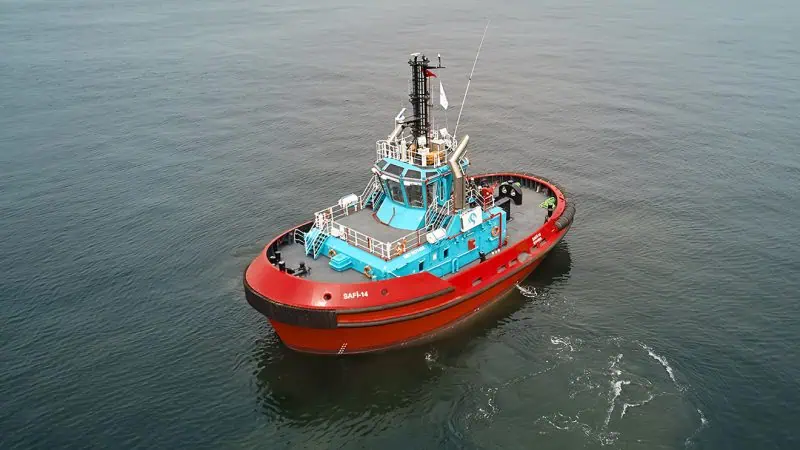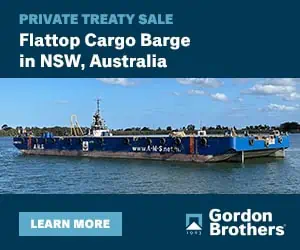Sanmar Shipyards has delivered a new-build TRAktor-Z 2500SX class tugboat to Safi Maritime Services in Turkey, designed for maximum efficiency in both harbour ship-handling and towing duties. With an impressive bollard pull of 74 tonnes, it is the most powerful tug that Sanmar has delivered to the expanding port.
Powered by two high speed, electronically controlled CAT 3516C HD D marine diesel engines, each achieving 2.100kW at 1.600 rev/min the tug, known as Delicay XII while under construction at Sanmar’s purpose-built state-of-the-art shipyards in Turkey, has been re-named SAFI-14 by its new owners.
Designed exclusively for Sanmar Shipyards by Canadian naval architects, Robert Allan Ltd, SAFI-14 measures 25.3m overall with a moulded beam of 12m, least moulded depth of 4.46m and an approximate extreme draft of 6.55m. Tank capacities include 83.900ltrs of fuel oil and 12.300lts of freshwater.
SAFI-14 is the fifth tug delivered to Safi Maritime Services by Sanmar Shipyards and follows the 60-tonnes bollard pull ASD tugboats BEDIA SAFI and CELAL SAFI delivered in 2016 and the 30-tonnes bollard pull Twin-screw tugboats SANMAR XXXI, delivered in 2012, and SANMAR XXX delivered in 2011.
Onboard power on SAFI-14 is provided by two identical CAT C4.4 diesel generators with operating frequencies of 50 Hz, continuous services ratings of 99 ekW and output voltages of 400 volts. The tug has FiFi 1 class fire-fighting capability, with its one main fire pump driven through clutched flexible coupling aft of one of the main engines, producing approximately 2.700m3/hour of water.
Ali Gurun, Vice President of Sanmar Shipyards, said: “We are delighted that Safi Maritime Services has chosen us to provide it with the strong and powerful new tug it needs for its expanding business. It is always good when a client comes back for more and we are proud to be a partner in its ambitious plans for the future of this important port. SAFI-14 is a fine example of our new generation of modern tugboats that can be designed and built to match the specific needs of individual operators.”













